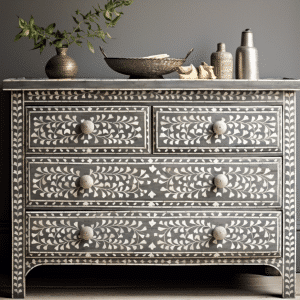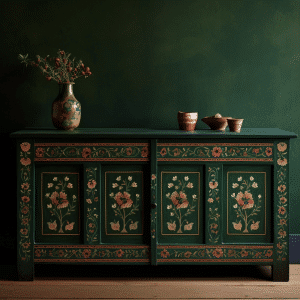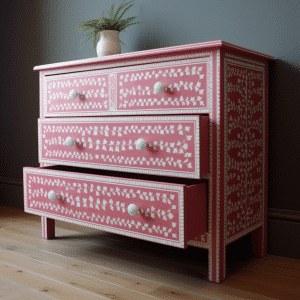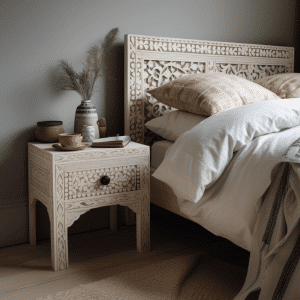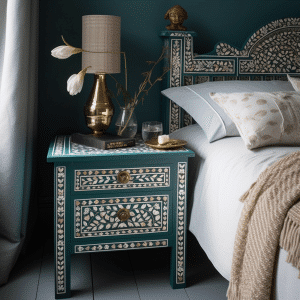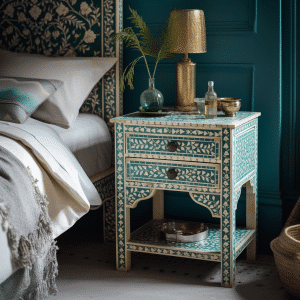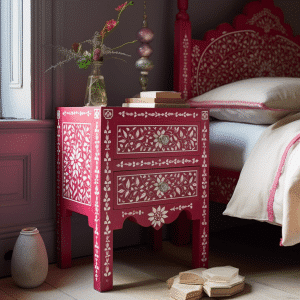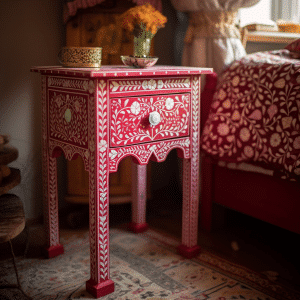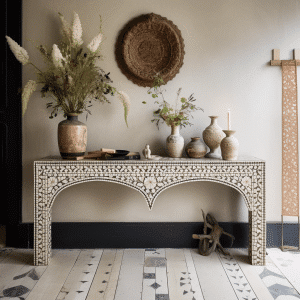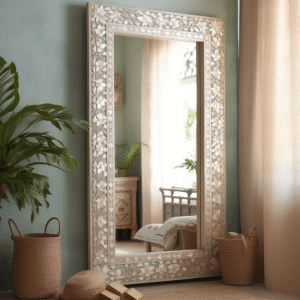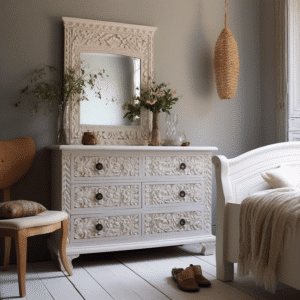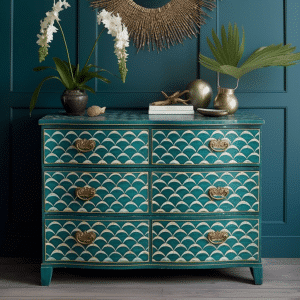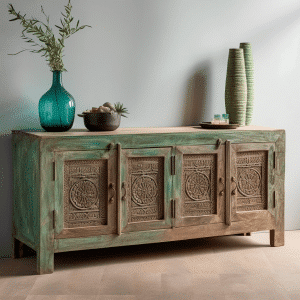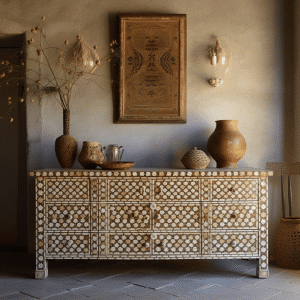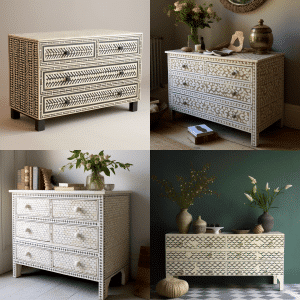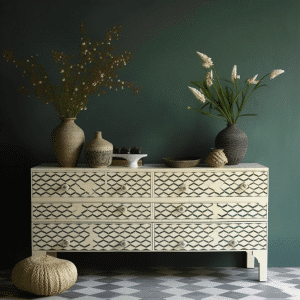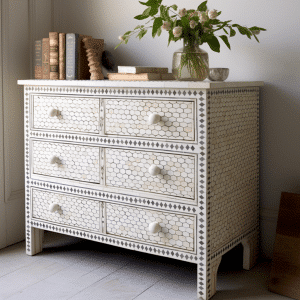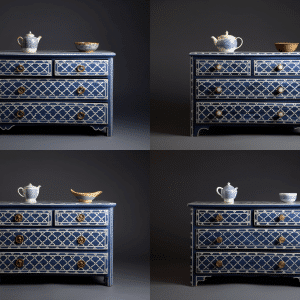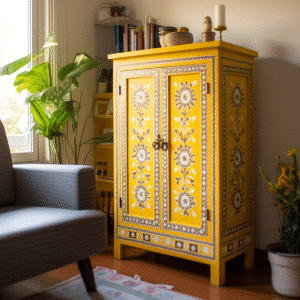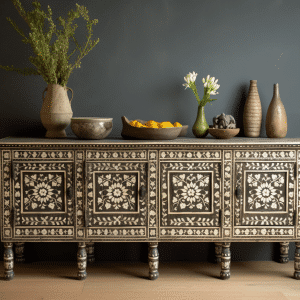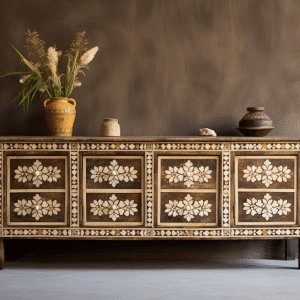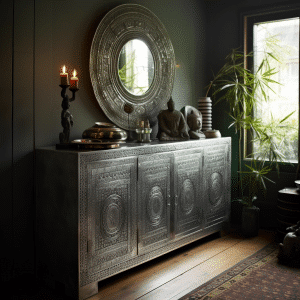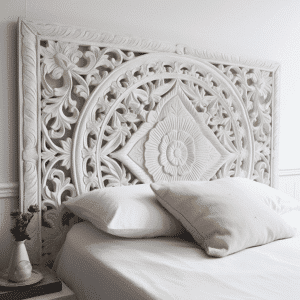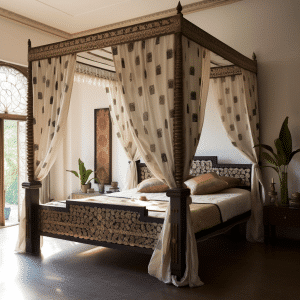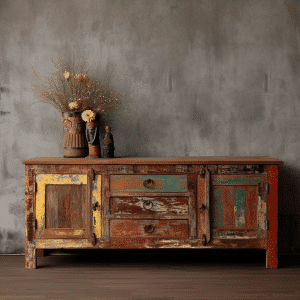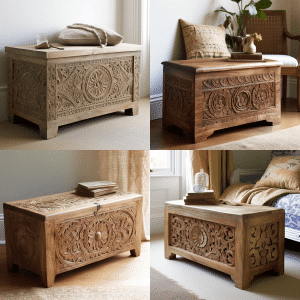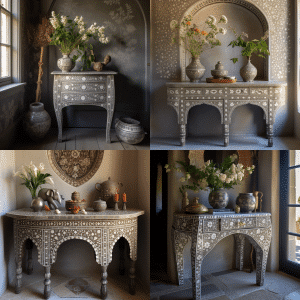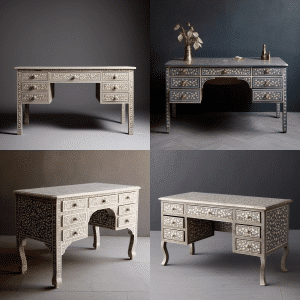Uncategorized
Creating Your Global Sanctuary – Tips for Integrating Indian Handmade Furniture into Your Home
Welcome to a world where your home becomes a global sanctuary, merging the essence of different cultures into an enchanting oasis of comfort and style. The importance of incorporating cultural elements into your home decor cannot be overstated, as it allows you to create an environment that reflects your unique personality and fosters a sense of belonging. One such way to embrace the beauty of diverse traditions is through the appeal of Indian handmade furniture.
In this post, we will delve into the mesmerising world of Rangoli-inspired furniture, showcasing how these intricate designs can infuse your living space with a touch of bohemian elegance. We’ll explore how the timeless appeal of Bone Inlay and Mother of Pearl furniture pieces can elevate your interiors while paying homage to ancient Indian craftsmanship. Additionally, we’ll provide insights on proper care and maintenance techniques to ensure the longevity and splendour of your precious investment.
As you journey with us through this creative fusion of culture, design, and artistry, you’ll discover how to incorporate handcrafted Indian furniture into your living space in a manner that not only enhances its visual appeal but also creates a personalised haven that resonates with your free-spirited soul. So, let’s embark on this voyage towards curating an extraordinary realm where art knows no boundaries, and your home becomes a reflection of your passions and dreams.
The Art of Indian Handmade Furniture: Bone Inlay and Mother of Pearl
Venture into the realm of Indian handmade furniture, and you’ll discover a world steeped in history, culture, and unparalleled artistry. The exquisite techniques of bone inlay and mother of pearl work have been passed down through generations, breathing life into mesmerising pieces that captivate their beholders.
These ancient practices have their roots in the opulent courts of the Mughal emperors, where skilled artisans crafted intricate designs using natural materials to adorn palaces and homes. The craftsmanship behind bone inlay and mother of pearl furniture bears testimony to India’s rich cultural heritage, reflecting centuries of artistic evolution.
Sustainability is at the heart of these traditional techniques. Artisans employ ethically sourced camel bone, buffalo bone, or even reclaimed wood for bone inlay, while iridescent mother of pearl shells are carefully harvested from the sea. By reusing and repurposing natural materials, these craftspeople ensure that their creations are not only beautiful but also eco-friendly.
But it’s not just their sustainable origins that make these pieces alluring; it’s also the stories they tell. Each piece serves as a conversation starter—a tangible connection to an ancient lineage of skilled hands that have honed their craft over time. As you admire the intricate patterns and motifs adorning your home, you’re not just showcasing an exceptional work of art; you’re also sharing a piece of history with all who enter your sanctuary.
Indian handmade furniture—especially those adorned with bone inlay or mother of pearl—is more than just an aesthetic choice; it’s an homage to a storied past that weaves a narrative into your living space. Embrace this union of history and contemporary design to create a vibrant sanctuary that transcends borders and celebrates cultural diversity at its finest.
Integrating Indian Handmade Furniture into Your Home: A Fusion of Tradition and Elegance
An exquisite blend of traditional charm and contemporary sophistication, Indian handmade furniture is a true testament to the skilled artistry of generations past. Here are a few tips to help you seamlessly integrate these stunning pieces into your home:
- Choose the right piece for your space: Begin by assessing your room’s layout, size, and overall design theme. Opt for furniture that compliments your existing decor while adding an unmistakable touch of Indian craftsmanship.
- Balance tradition with modernity: Striking a perfect balance between traditional and contemporary design elements is key to creating a cohesive and harmonious look. Pair your Indian handmade furniture with modern accents, such as sleek metallic finishes or minimalist accessories, to achieve an eclectic yet refined atmosphere.
- Customisation options: Many artisans offer customisation services, allowing you to tailor the colours, patterns, and materials used in their creations. This ensures that each piece is not only uniquely beautiful but also perfectly suited to your personal aesthetic.
- Create harmony within your home: To maintain a visually appealing and unified look throughout your living space, consider incorporating complementary accessories such as rugs, cushions or wall art that echo the motifs found in your handcrafted furniture.
By following these expert tips, you’ll soon be basking in the splendour of an enchanting living space that effortlessly combines the rich heritage of Indian craftsmanship with the sleek allure of modern design. And with each conversation sparked by these meticulously crafted pieces, you’ll have the opportunity to share not just their beauty but also the remarkable stories behind them—the ultimate expression of style and substance united in perfect harmony.
Supporting Local Artisans and Sustainable practices: A Crucial Element in Your Home Decor Journey
In an age where conscious consumerism is becoming increasingly essential, the importance of ethically sourced and environmentally friendly furniture cannot be overstated. By investing in companies that adhere to these principles, you not only contribute to a healthier planet but also support local artisans and their craft.
One such company that champions these values is Iris Furnishing, which bridges the gap between skilled Indian craftsmen and discerning homeowners who appreciate the beauty of handmade furniture. By purchasing from such businesses, you empower local artisans, fostering their livelihoods while preserving traditional art forms that might otherwise fade into obscurity.
As a consumer, you hold immense power in shaping the trajectory of the market. Your choices can either encourage sustainable practices or perpetuate harmful ones. By consciously selecting companies like Iris Furnishing that prioritise ethical sourcing and eco-friendly materials, you play a vital role in conserving our planet’s finite resources and promoting fair working conditions for artisans globally.
Moreover, by incorporating Indian handmade furniture into your living space, you become an ambassador for cultural diversity and traditional craftsmanship. Each piece tells a story that transcends borders and time, immortalising the legacy of countless generations of artists who have honed their skills to perfection.
So, embrace your role as a catalyst for positive change—choose ethically sourced and sustainable products that align with your values while supporting local artisans. In doing so, you’ll create not just a beautiful home but also a brighter future for our planet and its inhabitants.
Creating a Spiritual Sanctuary with Indian Furniture: The Essence of Serenity and Mindfulness
The connection between Indian culture and spirituality runs deep, transcending time and permeating every aspect of life. As you embark on the journey to create a calming and mindful living space, consider the transformative potential of Indian furniture, infused with spiritual elements that evoke tranquillity and harmony.
To manifest a serene atmosphere using Indian furniture, follow these expert tips:
- Select pieces with symbolic significance: Opt for furniture adorned with motifs that hold spiritual meaning in Indian culture. For instance, the lotus flower represents purity and enlightenment, while the Tree of Life symbolises interconnectedness and growth.
- Embrace natural materials: Indian handmade furniture often incorporates eco-friendly materials like wood, bone inlay, and mother of pearl. These elements not only showcase masterful craftsmanship but also foster a sense of grounding and connection to nature.
- Create focal points for meditation or reflection: Arrange your furniture to establish spaces dedicated to mindfulness practices such as meditation or yoga. A beautifully crafted wooden altar or intricately carved screen can serve as an inspiring backdrop for your spiritual endeavours.
- Utilise soothing colour palettes: Align your home decor with colours that evoke feelings of peace and tranquillity. Earthy tones, soft pastels, or muted jewel hues can seamlessly blend with the exquisite designs found in Indian furniture.
- Integrate fragrances and sounds: Complement your stunning Indian furniture by incorporating aromatic scents such as sandalwood or jasmine through candles or diffusers. Additionally, soothing sounds like chimes or gentle background music can enhance your overall sensory experience.
By thoughtfully integrating these elements into your home decor, you’ll create a sanctuary where serenity reigns supreme—a haven where you can retreat from the frenzy of daily life and reconnect with your inner self amidst an enchanting tapestry of Indian artistry and spirituality.
Creating a Worldly Wonderland: Curating Unique Handmade Furniture from Across the Globe
The allure of a globally inspired living space lies in its ability to transport you to exotic locales without leaving the comfort of your home. By mixing and matching furniture pieces from different cultures, you create an eclectic sanctuary that exudes warmth, sophistication, and intrigue. Here’s how to embark on this cosmopolitan journey:
- Embrace diversity: A truly captivating interior thrives on variety. Incorporate handmade furniture from diverse regions such as Indian bone inlay, Moroccan pouffes, or Balinese carvings. This melange of styles creates a visual tapestry that sparks curiosity and conversation.
- harmonise elements: When blending styles, seek harmony through colour palettes, textures, or patterns. For instance, unite vibrant Indian textiles with bold African prints or juxtapose sleek Scandinavian lines against intricate Asian motifs.
- Unearth hidden gems: To source unique pieces, venture beyond mainstream retailers. Explore local flea markets, antique shops, or online boutiques that specialise in artisanal creations. Forge connections with craftspeople who can share the stories behind their work and offer customisation options.
- Balance old and new: Offset traditional furnishings with contemporary accents for an ambience that transcends time. Pairing an antique Japanese screen with a modern minimalist coffee table can evoke a sense of balance and continuity.
- Experiment with scale: Play with proportions by combining larger statement pieces with smaller accents. A colossal carved wooden headboard may be balanced by diminutive bedside tables adorned with delicate mother-of-pearl inlays.
By curating a collection of unique handmade furniture from around the world, you’re not just decorating your home—you’re creating an immersive experience that reflects your personal tastes and passions while celebrating the rich tapestry of global artistry. So go ahead—unleash your inner explorer and let your living space be the canvas upon which you paint a vibrant story of cultural fusion.
Conclusion
In conclusion, integrating Indian handmade furniture into your home elevates not only the aesthetic appeal of your living space but also reflects your personal values and affinity for cultural connections. These unique pieces of artistry, steeped in tradition and expert craftsmanship, infuse your home with a sense of warmth and sophistication that is unrivalled by mass-produced alternatives.
By consciously choosing ethically sourced and environmentally friendly furniture, you are making a powerful statement about your commitment to sustainable practices and the preservation of traditional art forms. Furthermore, as you embrace the harmonious fusion of Indian furniture with contemporary design elements, you create a luxurious sanctuary that transcends geographical boundaries.
As you continue on this journey of self-discovery and global appreciation, we encourage you to explore and incorporate even more diverse design elements from around the world. This eclectic approach will not only enrich your living environment but also foster a deeper understanding of the beauty and diversity that exists within our interconnected world.
So go ahead – embark on this exciting adventure to curate a living space that is uniquely yours, where each piece tells a story of culture, artistry, and sustainability. It’s time to transform your home into a reflection of your values and passions, celebrating the rich tapestry of global craftsmanship while contributing to a brighter future for our planet and its inhabitants. The impact you make through these choices will be felt across generations – an inspiring testament to the power we hold as consumers in shaping the world around us.
Frequently Asked Questions
- How do I choose the right piece of Indian handmade furniture for my home?
Selecting the perfect Indian handmade furniture for your home involves considering your personal style, room dimensions, and existing decor. Start by assessing the space where the furniture will be placed, keeping in mind the scale and functionality required. Browse through various designs and materials to find pieces that resonate with your taste and complement your current interior theme. Above all, trust your instincts and opt for pieces that evoke a sense of cultural connection and bring warmth to your living space.
- What is the process of creating bone inlay or mother of pearl furniture?
The intricate artistry of bone inlay or mother of pearl furniture involves skilled craftsmen meticulously cutting, shaping, and assembling delicate pieces of material to form stunning geometric or floral patterns. These materials are then affixed onto a wooden base using resin or adhesive, followed by polishing and finishing touches to enhance the beauty and durability of the final product. The entire process is labour-intensive, requiring patience, precision, and years of experience.
- How can I ensure the furniture I buy is ethically sourced and environmentally friendly?
To guarantee ethical sourcing and environmental friendliness when purchasing furniture, research companies that prioritise these values. Look for transparency regarding their supply chains, manufacturing processes, material sourcing, and fair treatment of artisans. Opt for businesses that use eco-friendly materials like sustainably harvested wood or reclaimed materials to minimise environmental impact.
- Can I customise the design or colour of the furniture to match my decor?
Many artisans and specialised retailers offer customization options for Indian handmade furniture to suit individual preferences. prioritise communication with craftspeople or sellers to discuss specific requirements such as dimensions, colours, patterns, or finishes. Customization may require additional time and cost but will result in unique pieces tailored to your vision.
- What is the history and cultural significance of these traditional Indian art forms?
Indian handmade furniture, such as bone inlay or mother of pearl creations, are deeply rooted in the country’s rich cultural heritage. Passed down through generations, these art forms are a testament to India’s diverse craftsmanship and its penchant for intricate detailing. By incorporating these traditional art forms into your home, you not only celebrate their history but also contribute to preserving and supporting the livelihood of skilled artisans.


